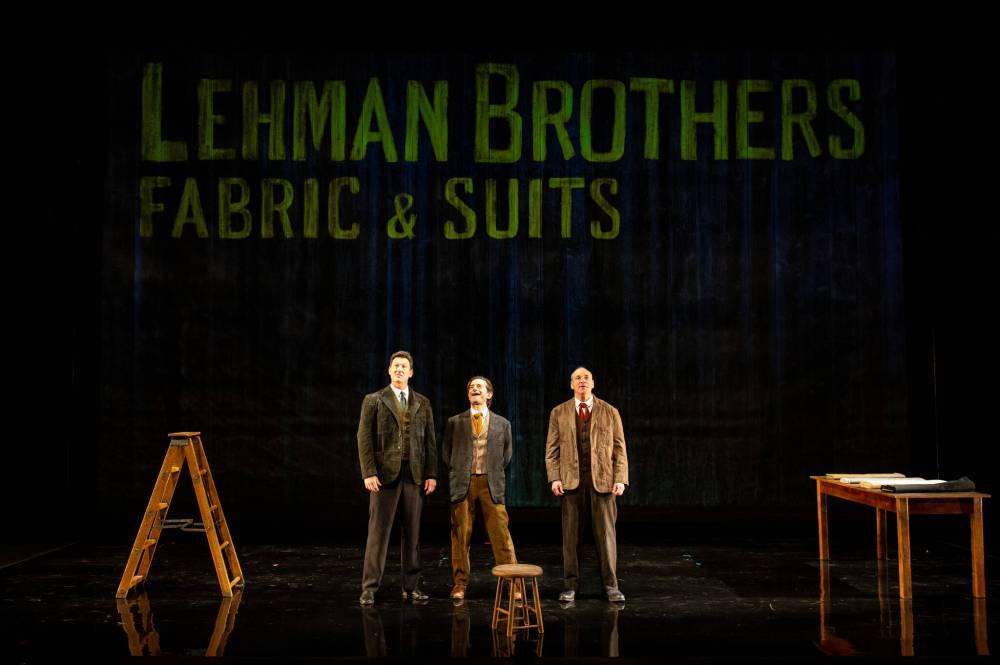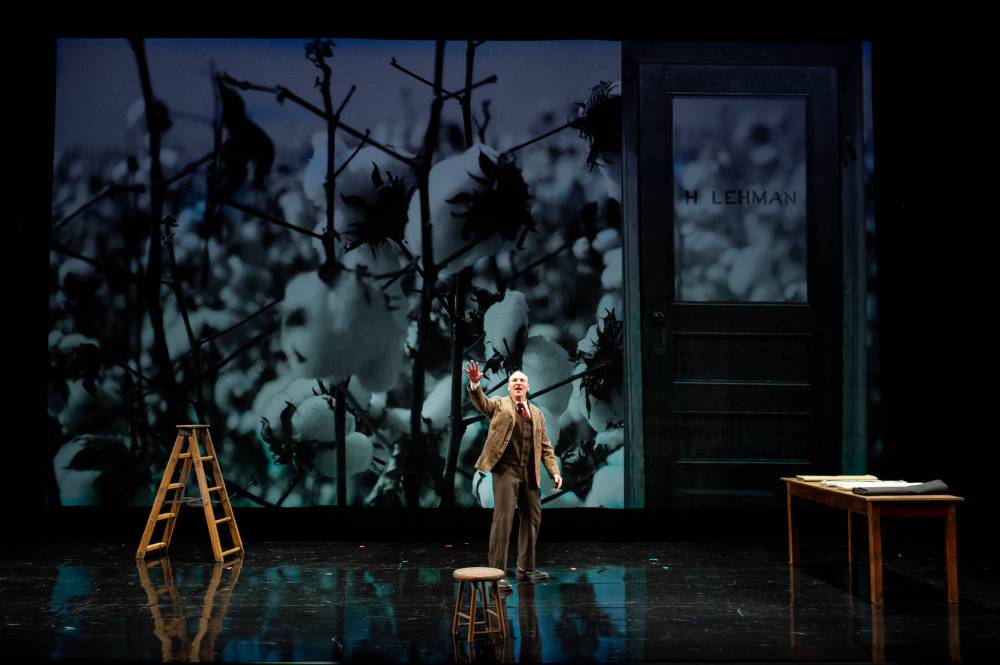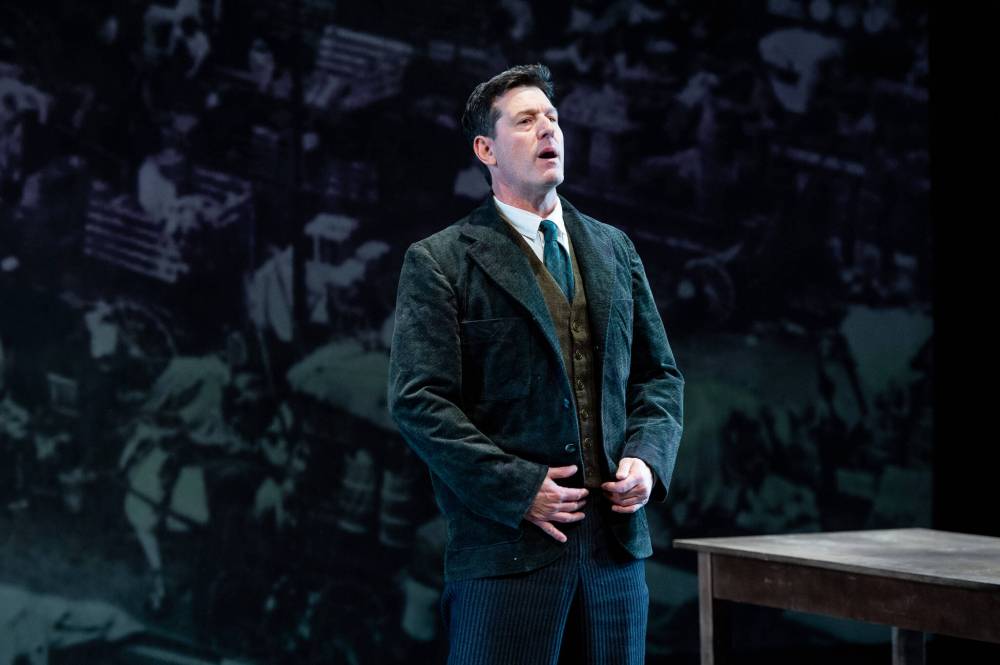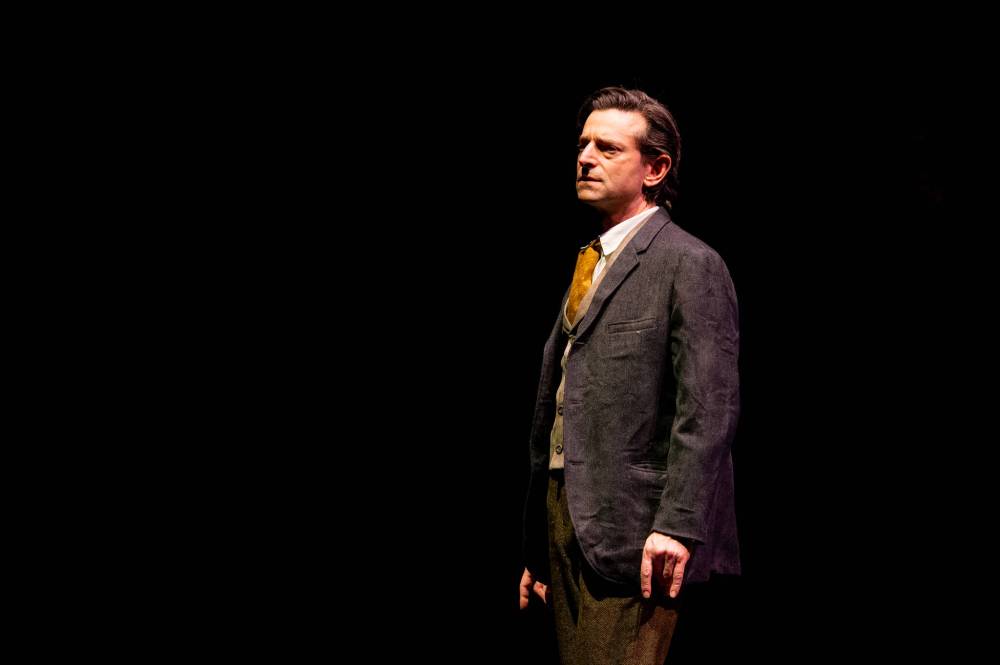Rags to rags
Talented trio paints rich tapestry of capitalistic collapse
Advertisement
Read this article for free:
or
Already have an account? Log in here »
To continue reading, please subscribe:
Monthly Digital Subscription
$1 per week for 24 weeks*
- Enjoy unlimited reading on winnipegfreepress.com
- Read the E-Edition, our digital replica newspaper
- Access News Break, our award-winning app
- Play interactive puzzles
*Billed as $4.00 plus GST every four weeks. After 24 weeks, price increases to the regular rate of $19.00 plus GST every four weeks. Offer available to new and qualified returning subscribers only. Cancel any time.
Monthly Digital Subscription
$4.75/week*
- Enjoy unlimited reading on winnipegfreepress.com
- Read the E-Edition, our digital replica newspaper
- Access News Break, our award-winning app
- Play interactive puzzles
*Billed as $19 plus GST every four weeks. Cancel any time.
To continue reading, please subscribe:
Add Winnipeg Free Press access to your Brandon Sun subscription for only
$1 for the first 4 weeks*
*$1 will be added to your next bill. After your 4 weeks access is complete your rate will increase by $0.00 a X percent off the regular rate.
Read unlimited articles for free today:
or
Already have an account? Log in here »
Hey there, time traveller!
This article was published 22/03/2024 (533 days ago), so information in it may no longer be current.
A biblical saga of rags and riches, cotton bolls and melting pots, The Lehman Trilogy traces a road from 1844 to September 2008, when loose leaves trickled down from skyscrapers flimsy as playing-card castles, coating the streets of New York with certificates commemorating the death of a certain type of American fever dream.
Before the end, and before his family made a fortune working within the margins of the middle, Henry Lehman (Alex Poch Goldin) stands — suit wrinkled, tie rumpled — at the beginning, fresh off the steamship with the future lying ahead. In his head, an idea of America and, tucked inside his brand-new shoes, two feet walking quickly, “despite not knowing where to go.”
In short order, the strong-armed Emmanuel (Ari Cohen) and the affable Mayer (Jordan Pettle) join their brother in Montgomery, Ala. The three brothers hang a shingle, a doortop demarcation that serves as the first of Stefano Massini’s keenly observed allusions to the story of Passover (the Italian playwright’s work is adapted by Ben Power).

Dylan Hewlett Photo
From left: Ari Cohen, Jordan Pettle and Alex Poch Goldin all play multiple characters in The Lehman Trilogy.
In place of lamb’s blood, yellow paint, reading in capital letters — yes, it matters — LEHMAN BROTHERS FABRIC & SUITS.
What happens next reads like a fable dreamed up by a braintrust of Isaac Bashevis Singer, Paddy Chayefsky and Andrew Ross Sorkin, brought to life with astonishing virtuosity by the three actors tasked with making something out of nothing.
Under the direction of Richard Greenblatt, each movement is mathematical, yet also open-ended, allowing the production — three hours, with two intermissions — to tap dance jazzily atop a story unplagued by incessant financialese.
Unlike recent capitalistic takedowns, The Lehman Trilogy does not position itself as an introductory course about the dangers of the subprime mortgage. Instead, it is a masterclass in consumption, told through action, immersive audio-video design and careful propwork.
Divided into three chapters, the first of which is its strongest, Lehman is rich in metaphor and verbal imagery.
For a show as intricately layered as this one to not fail, it is necessary for its actors to aim, like the characters they portray, for joint legacy. It is difficult to imagine a trio better suited to the task than Cohen, Poch Goldin and Pettle.

Dylan Hewlett Photo
Alex Poch Goldin as Henry Lehman
Each of the three actors is Jewish, bringing a level of authenticity no other major production of Lehman mounted thus far can claim. When Henry dies, forcing Emmanuel and Mayer to say the mourner’s kaddish, it’s obvious they’ve said it in real life, enunciating each ‘S’ with the bitterness of familiarity. (The dialect work, coached by Jane Gooderham, is a tour de force.)
But there’s more to the depth of these performances than religion alone. Most Jewish men could stand in the pews of a synagogue to chant the prayer of the bereaved; these three embody a full minyan’s worth of characters, savouring each one as they sway to the ticker-tape metronome of economic progress.
Winnipeg-based Poch Goldin is a remarkably funny actor: he transforms into a six-year-old Philip Lehman so convincingly, that later in Philip’s arc, when he animates the once-timid scion with the ferocity of a tycoon, the audience is left wondering how their little boy went so wrong. His freakishly full treatment of Babette, Mayer’s wife, has echoes of Jack Lemmon in Some Like It Hot.
Cohen, also of Winnipeg but based in Toronto, brings to his Lehmans solid grace and physicality, imbuing the hardscrabble Emmanuel with salt and New York governor Herbert H. Lehman with an upright, New Deal morality, standing in stark contrast to the volatile Philip and the ethically malleable Robert (Pettle).
Pettle’s primary role of Mayer is not black and white: while Emmanuel is the arm and Henry is the head, Mayer considers himself “a potato,” a buffer between his brothers.
Robert’s is an entirely different story to tell, but like his castmates, Pettle’s versatility is his greatest strength. One stretch, requiring him to embody several candidates for Philip’s marriage, sees Pettle wriggle into socialites and bookworms in alternating breaths.

Dylan Hewlett Photo
Ari Cohen
The production is bolstered by Ashley Au’s motif-laden sound design, which serves as an indication of past, present and future. The lighting and video design team, led by Hugh Conacher, is mobile and gymnastic. The videos serve as an integral part of set and costume designer Gillian Gallow’s sparse environment, filled only with what’s necessary to tell this story: tables, chairs, cotton and suits.
The video screen tilts to signal the grounds shifting for the Lehmans, whose dealings go from cotton to dry goods to railroads to cash to mere promises of it.
A few key shifts: the end of the Civil War, which forced divestment from the slavery-enabled southern textile market; and Oct. 24, 1929, a Thursday remembered darkly.
Some might criticize Massini for eschewing any lengthy mention of the Holocaust, antisemitism, Reaganomics or 9/11 — valid — but these are ever-present facts within the production’s structure; Massini respects the audience enough to expect their historical awareness.
The era of greed being good is typified by a wonderfully incongruent dance sequence, wherein an elderly Bobby Lehman (Pettle) gleefully twists in his office while the common man writhes under the false promise of land and liberty.
Meanwhile, the slow reveal of the Lehmans’ tells — shaking hands and averting eyes — positions the actors at a poker table, repeatedly raising their own stakes and hoping the cards continue to fall in their favour.

Dylan Hewlett Photo
Jordan Pettle
Just as in The Mountaintop, the RMTC’s recently staged retelling of Martin Luther King’s final night, Lehman is a production with a foregone conclusion. What began with an open-end closes with a prayer for the dead: Yisgadal v’yiskadash shmei raba.
For whom and for what are these men mourning?
ben.waldman@winnipegfreepress.com

Ben Waldman is a National Newspaper Award-nominated reporter on the Arts & Life desk at the Free Press. Born and raised in Winnipeg, Ben completed three internships with the Free Press while earning his degree at Ryerson University’s (now Toronto Metropolitan University’s) School of Journalism before joining the newsroom full-time in 2019. Read more about Ben.
Every piece of reporting Ben produces is reviewed by an editing team before it is posted online or published in print — part of the Free Press‘s tradition, since 1872, of producing reliable independent journalism. Read more about Free Press’s history and mandate, and learn how our newsroom operates.
Our newsroom depends on a growing audience of readers to power our journalism. If you are not a paid reader, please consider becoming a subscriber.
Our newsroom depends on its audience of readers to power our journalism. Thank you for your support.


